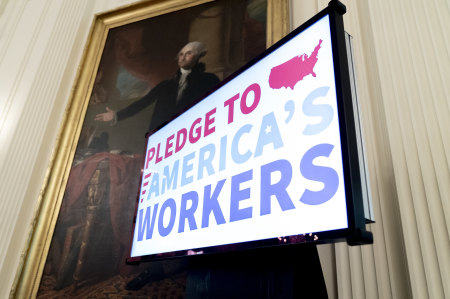Stress reaches ‘all-time high’ among world’s workers as 60% detach emotionally: report

Stress among the world’s workers reached an all-time high in 2021, with 60% reporting they felt emotionally detached from their jobs while many others reported not feeling hopeful about the future, according to the State of the Global Workplace: 2022 Report from global analytics and advice firm Gallup.
Some 44% of employees reported that they experienced stress a lot the previous day, the report said. And while they “may not have been stressed about work,” the report added, “they were certainly stressed at work.”
“Inevitably, the stress workers feel impacts the workplace. And while 2021 saw declines in worry, sadness and anger, all these negative emotions remained above pre-pandemic levels,” the report said.
Employee engagement, according to Glint, “is the degree to which employees invest their cognitive, emotional, and behavioral energies toward positive organizational outcomes.” Engaged employees are usually absorbed in and passionate about their work. They also usually find a greater sense of meaning in what they do.
Gallup found that only 21% of the world’s employees are engaged with their work and when broken down by regions, varying levels of engagement emerge.
With 33% of employees reporting that they are engaged, the United States and Canada registered the highest level of engagement, according to the report. South Asia was 27%; Southeast Asia, 24%; Latin America and the Caribbean, 23%; Sub-Saharan Africa, 21%; Commonwealth of Independent States, 20%; East Asia, 17%; Australia and New Zealand, 17%; Middle East and North Africa, 15%; and Europe was at the bottom of the regional employee engagement rankings at 14%.
While only 33% of the world’s workers reported that they are thriving, 63% of workers in Australia and New Zealand reported that they were thriving followed workers in the United States and Canada where 60% of workers said they were thriving.
These regions were the only two worldwide where more than 50% of workers reported that they're thriving.
“The pain from work has caused leaders to invent new ways to get as far from work as possible. Movements to attain ‘work-life balance,’ implement four-day workweeks and expand remote work are now everywhere,” Jon Clifton, CEO of Gallup noted in the report. “But it’s not just the hours, imbalance or location that leave workers unhappy. It’s what’s happening at work that makes them miserable.”
He explained that in one of the largest studies of burnout, Gallup found the biggest reason people cited for a job being bad was rooted in “unfair treatment at work.” The reason was followed by “an unmanageable workload, unclear communication from managers, lack of manager support and unreasonable time pressure.”
Clifton further noted that many of the reasons behind bad jobs can be tracked back to bad bosses.
“Get a bad one (boss) and you are almost guaranteed to hate your job,” he wrote. “A bad boss will ignore you, disrespect you and never support you. Environments like that can make anyone miserable. A manager’s effect on a workplace is so significant that Gallup can predict 70% of the variance in team engagement just by getting to know the boss.”
He noted that having thriving workers not only benefits the individual but companies in general.
“It pays to have thriving workers. Business units with engaged workers have 23% higher profit compared with business units with miserable workers. Additionally, teams with thriving workers see significantly lower absenteeism, turnover and accidents; they also see higher customer loyalty,” he said. “The point is: Wellbeing at work isn’t at odds with anyone’s agenda. Executives everywhere should want the world’s workers to thrive. And helping the world’s workers thrive starts with listening to them.”





















